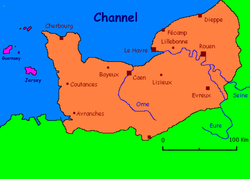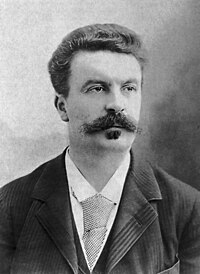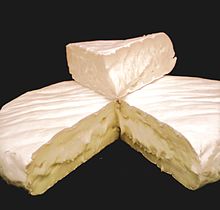Normandy: Difference between revisions
rv |
|||
| Line 14: | Line 14: | ||
Other towns include: [[Alençon]]; [[Arromanches]]; [[Avranches]]; [[Bayeux]]; [[Coutances]]; [[Dieppe, Seine-Maritime|Dieppe]]; [[Doudeville]]; [[Évreux]]; [[Falaise, Calvados|Falaise]]; [[Honfleur]]; [[Houlgate]]; [[Lisieux]]; [[Mortain]]; [[Saint-Lô]]; [[Saint-Sauveur-le-Vicomte]]; [[Sainte-Mère-Église]]; and [[Villers-Bocage, Calvados|Villers-Bocage]]. |
Other towns include: [[Alençon]]; [[Arromanches]]; [[Avranches]]; [[Bayeux]]; [[Coutances]]; [[Dieppe, Seine-Maritime|Dieppe]]; [[Doudeville]]; [[Évreux]]; [[Falaise, Calvados|Falaise]]; [[Honfleur]]; [[Houlgate]]; [[Lisieux]]; [[Mortain]]; [[Saint-Lô]]; [[Saint-Sauveur-le-Vicomte]]; [[Sainte-Mère-Église]]; and [[Villers-Bocage, Calvados|Villers-Bocage]]. |
||
HI PEOPLE HOW R U !!!!!!!!!!!! I LUV PURPLE HIPPOS |
|||
==Geography== |
==Geography== |
||
The region is bordered along the northern coasts by the [[ |
The region is bordered along the northern coasts by the [[English Channel]]. There are granite [[cliff]]s in the west and limestone cliffs in the east. There are also long stretches of beach in the center of the region. The ''bocage'', patchwork of small fields with high hedges, typical of the western areas caused problems for the invading forces in the [[Battle of Normandy]]. There are [[meander]]s of the Seine as it approaches its estuary which form a notable feature of the landscape. |
||
===Regions=== |
===Regions=== |
||
| Line 67: | Line 66: | ||
===Channel Islands=== |
===Channel Islands=== |
||
Although the |
Although the British surrendered claims to mainland Normandy and other French possessions in [[1801]], the monarch of the United Kingdom retains the title Duke of Normandy in respect to the Channel Islands. The Channel Islands (except for [[Chausey]]) remain a [[Crown dependency]] of the [[The Crown|British Crown]] in the present era. Thus the [[Loyal Toast]] in the Channel Islands is ''La Reine, notre Duc'' ("The Queen, our Duke"). The British monarch is understood to ''not'' be the Duke of Normandy in regards of the French region of Normandy described herein, by virtue of the [[Treaty of Paris (1259)|Treaty of Paris of 1259]], the surrender of French possessions in 1801, and the belief that the rights of succession to that title are subject to [[Salic Law]] which excludes inheritance through female heirs. |
||
===Norman Conquests=== |
===Norman Conquests=== |
||
Revision as of 16:43, 7 May 2007

Normandy (in French: Normandie, and in Norman: Normaundie) is a geographical region in northern France. Upper Normandy (Haute-Normandie) consists of the French départements of Seine-Maritime and Eure, and Lower Normandy (Basse-Normandie) of the départements of Orne, Calvados, and Manche.
The former province Normandy comprised present-day Upper and Lower Normandy, as well as small areas now part of the départements of Eure-et-Loir, Mayenne, and Sarthe.
The historical Duchy of Normandy was a formerly independent duchy occupying the lower Seine area, the Pays de Caux and the region to the west through the Pays d'Auge as far as the Cotentin Peninsula.
The Channel Islands, although British crown dependencies, are considered culturally and historically a part of Normandy, and are referred to as Les Iles Anglo-Normandes in French.
Population

In January 2006 the population of Normandy (including the part of Perche which lies inside the Orne département but excluding the Channel Islands) was estimated at 3,260,000 with an average population density of 109 inhabitants per km², just under the French national average, but rising to 147 for Upper Normandy. The principal cities (population at the 1999 census) are Rouen (518,316 inhabitants in the metropolitan area), the capital of Upper Normandy and formerly of the whole province; Caen (370,851 inhabitants in the metropolitan area), the capital of Lower Normandy; Le Havre (296,773 inhabitants in the metropolitan area); and Cherbourg (117,855 inhabitants in the metropolitan area).
Other towns include: Alençon; Arromanches; Avranches; Bayeux; Coutances; Dieppe; Doudeville; Évreux; Falaise; Honfleur; Houlgate; Lisieux; Mortain; Saint-Lô; Saint-Sauveur-le-Vicomte; Sainte-Mère-Église; and Villers-Bocage.
Geography
The region is bordered along the northern coasts by the English Channel. There are granite cliffs in the west and limestone cliffs in the east. There are also long stretches of beach in the center of the region. The bocage, patchwork of small fields with high hedges, typical of the western areas caused problems for the invading forces in the Battle of Normandy. There are meanders of the Seine as it approaches its estuary which form a notable feature of the landscape.
Regions
- The Suisse normande (Norman Switzerland), in the south, presents hillier terrain.
- The Pays d'Auge, central Normandy, is characterized by excellent agricultural land.
- The Roumois
- The Lieuvin
- The Cotentin Peninsula
- The Pays de Caux
- The Bessin
- The Pays d'Ouche
- The Norman Vexin
- The Pays de Bray
Rivers
Rivers in Normandy include:
- the Seine
- the Orne
- the Vire
- the Eure
- the Risle
- the Robec
- the Touques
- the Couesnon, which traditionally marks the boundary between the Duchy of Brittany and the Duchy of Normandy.
The Pont de Normandie crossing the estuary of the Seine is regarded as a feat of modern engineering.
History
The fiefdom of Normandy was created for the Viking leader Rollo (also known as Richard of Normandy). Rollo had besieged Paris but in 911 entered vassalage to the king of the West Franks Charles the Simple through the Treaty of St.-Claire-sur-Epte. In exchange for his homage and fealty, Rollo legally gained the territory he and his Viking allies had previously conquered. The name "Normandy" reflects Rollo's Viking (i.e. "Northman") origins.
The descendants of Rollo and his followers adopted the local Gallo-Romantic language and intermarried with the area’s previous inhabitants and became the Normans – a Norman French-speaking mixture of Scandinavians, Hiberno-Norse, Orcadians, Anglo-Danish, and indigenous Gauls.

Rollo's descendant William, Duke of Normandy became king of England in 1066 in the Norman Conquest culminating at the Battle of Hastings while retaining the fiefdom of Normandy for himself and his descendants. In 1204, during the reign of King John, mainland Normandy was taken from England by France under Philip II while insular Normandy (the Channel Islands) remained under English control. In 1259, Henry III of England recognized the legality of French possession of mainland Normandy under the Treaty of Paris . His successors, however, often fought to regain control of mainland French Normandy.
French Normandy was occupied by English forces during the Hundred Years' War in 1346-1360 and again in 1415-1450. Afterwards, prosperity returned to Normandy until the Wars of Religion when many Norman towns (Alençon, Rouen, Caen, Coutances, Bayeux) joined the Reformation and battles ensued throughout the province. During the French Revolution, Normandy generally supported the idea of a Federal republic against the highly centralized conception championed by the Jacobins in Paris.

During World War II, the town of Dieppe was the site of the ill-fated Dieppe Raid by Canadian and British armed forces. More successful was the later Operation Overlord (also known as D-Day), a massive invasion of German-occupied France by Allied troops. Caen, Cherbourg, Carentan, and other Norman towns endured many casualties in the fight for the province, which continued until the liberation of Le Havre.

Channel Islands
Although the British surrendered claims to mainland Normandy and other French possessions in 1801, the monarch of the United Kingdom retains the title Duke of Normandy in respect to the Channel Islands. The Channel Islands (except for Chausey) remain a Crown dependency of the British Crown in the present era. Thus the Loyal Toast in the Channel Islands is La Reine, notre Duc ("The Queen, our Duke"). The British monarch is understood to not be the Duke of Normandy in regards of the French region of Normandy described herein, by virtue of the Treaty of Paris of 1259, the surrender of French possessions in 1801, and the belief that the rights of succession to that title are subject to Salic Law which excludes inheritance through female heirs.
Norman Conquests
Besides the Norman conquest of England and the subsequent conquests of Wales and Ireland, the inhabitants of Normandy made other conquests of note.
Norman families, such as that of Tancred of Hauteville played important parts in the Crusades. Tancred's sons William Iron Arm, Drogo of Hauteville, Humphrey of Hauteville, Robert Guiscard and Roger the Great Count conquered the Emirate of Sicily and additional territories in Southern Italy and carved out a place for themselves and their descendants in the in Crusader States of Asia Minor and the Holy Land.
15th century Norman explorer Jean de Béthencourt established a kingdom on the Canary Islands. Béthencourt received the title King of the Canary Islands but recognized Henry III of Castile, who had provided aid during the conquest, as his overlord.
Culture
Languages
The Norman language, a regional language, is spoken by a minority of the population, with a concentration in the Cotentin Peninsula in the far West known as Cotentinais, and in the Pays de Caux in the East. Many place names show Norse influence in this Oïl language; for example -bec (stream), -fleur (river), -hou (island), -tot (homestead).

Arts
Architecture
- Main article is Architecture of Normandy.
Architecturally, Norman cathedrals, abbeys (such as the Abbey of Bec) and castles characterise the former Duchy in a way that mirrors the similar pattern of Norman architecture in England following the Norman Conquest of 1066.
Domestic architecture in upper Normandy is typified by half-timbered buildings that also recall vernacular English architecture, although the farm enclosures of the more harshly landscaped Pays de Caux are a more idiosyncratic response to socio-economic and climatic imperatives. Much urban architectural heritage was destroyed during the Battle of Normandy in 1944 - post-war urban reconstruction, such as in Le Havre and Saint-Lô, could be said to demonstrate both the virtues and vices of modernist and brutalist trends of the 1950s and 1960s. Le Havre, the city rebuilt by Auguste Perret, was added to Unesco’s World Heritage List in 2005.
Vernacular architecture in lower Normandy takes its form from granite, the predominant local building material. The Channel Islands also share this influence - Chausey was for many years a source of quarried granite, including that used for the construction of Mont Saint-Michel.
The south part of Bagnoles-de-l'Orne, which is called “Belle Époque” district is filled with superb bourgeois villas with polychrome façades, bow windows and unique roofing. This area, built between 1886 and 1914, has an authentic “Bagnolese” style and is typical of high-society country vacation of the time.
Philosophy
Philosophers who are Norman by birth include:
Literature
Writers in the French language connected with Normandy include:

Writers in the English language connected with Normandy include:
Writers in the Latin language connected with Normandy include:
Writers in the Norman language include:
See also Anglo-Norman literature, Gesta Normannorum Ducum
Painting
From the 1860s, plein-air painters, who worked outside the studio, were attracted to Normandy by the ease of railway access from Paris. Claude Monet's waterlily garden at Giverny is one of the most popular tourist attractions in the region. Eugène Boudin's paintings of fashionable seaside scenes are also typical.
Artists Norman by birth include:
Music
Composers and musicians Norman by birth include:
Design
Christian Dior, fashion designer, was born in Granville. Laetitia Casta, supermodel, was born in Pont-Audemer and her mother Line Blin is Norman since several generations.
Religion

The cathedrals of Normandy have exerted influence down the centuries in matters of both faith and politics. Mont Saint-Michel is a historic pilgrimage site. The influence of Celtic Christianity can still be found in the Cotentin.
Many saints have been revered in Normandy down the centuries, including:
- St. Aubert who is remembered as the founder of Mont Saint-Michel
- Saint Marcouf and Saint Lô who are important saints in Lower Normandy
- Helier and Samson of Dol who are evangelizers of the Channel Islands
- Thomas Becket, an Anglo-Norman whose parents were from Rouen, who was the object of a considerable cult in mainland Normandy following his martyrdom
- St. Joan of Arc who was martyred in Rouen, and who is especially remembered in that city
- Thérèse de Lisieux whose former home in Lisieux is a focus for religious devotion
Normandy does not have one generally-agreed patron saint, although this title has been ascribed to Saint Michael, and to Saint Ouen.
Prominent Protestants ministers include Pierre Allix, Jacques Basnages, and Samuel Bochart.
Food and drink

Normandy is famous for its rich, rolling countryside, which provides plentiful pasture for dairy cattle and orchards for apples. The dairy produce of the region is renowned: its cheeses are world famous and include Camembert, Livarot, Pont l'Evêque, Brillat-Savarin, Neufchâtel, and Boursin. Normandy butter is highly prized, as is Normandy cream, both of which are lavishly used in local gastronomic specialties. Fish and seafood are of superior quality in Normandy. Turbot and oysters from the Cotentin Peninsula are major delicacies throughout France. Normandy is the chief oyster-cultivating, as well the biggest scallop-exporting, region in France.
Normandy is a major cider-producing region (very little wine is produced). Perry is also produced, but in less significant quantities. The apple brandy, of which the most famous variety is calvados, is also popular. The mealtime trou normand, or Norman break, is a pause between meal courses in which diners partake of a glassful of calvados, is still observed in many homes and restaurants. Pommeau is an aperitif produced by blending unfermented cider and apple brandy. Another aperitif is the kir normand, a measure of cassis topped up with cider. Bénédictine is produced in Fécamp.
Apples are also used in cooking: for example, moules à la normande are mussels cooked with apples and cream, bourdelots are apples baked in pastry, partridges are flamed with reinette apples, and localities all over the province have their own variation of apple tart. A classic pastry dish from the region is flan Normand a pastry-based variant of the apple tart.
Other regional specialities include tripes à la mode de Caen, andouilles and andouillettes, salt meadow (pré salé) lamb, seafood (mussels, scallops, lobsters, mackerel…), and teurgoule (spiced rice pudding).
Normandy dishes include duckling à la rouennaise, sautéed chicken yvetois, and goose en daube. Rabbit is cooked with morels, or à la havraise (stuffed with truffled pigs' trotters). Other dishes are sheep's trotters à la rouennaise, casseroled veal, larded calf's liver braised with carrots, and veal (or turkey) in cream and mushrooms.

Normandy is also noted for its pastries. It is the birthplace of brioches (especially those from Évreux and Gisors) and also turns out douillons (pears baked in pastry), craquelins, roulettes in Rouen, fouaces in Caen, fallues in Lisieux, sablés in Lisieux. Confectionery of the region includes Rouen apple sugar, Isigny caramels, Bayeux mint chews, Falaise berlingots, Le Havre marzipans, Argentan croquettes, and Rouen macaroons.
Normandy is the native land of Taillevent, cook of the kings of France Charles V and Charles VI. He wrote the earliest French cookery book named Le Viandier. Confiture de lait was also made in Normandy around the 14th century.
Symbols
The traditional provincial flag of Normandy, gules, two leopards passant or, is used in both modern regions.
The historic three-leopard version (known in the Norman language as les trois chats, "the three cats") is used by some associations and individuals, especially those who support reunification of the regions and cultural links with the Channel Islands and England.
-
Nordic Cross flag -
"Two-leopard" provincial flag -
"Three-leopard" version -
"Two-leopard" flag of Sark -
Modern logo of Upper Normandy
The unofficial anthem of the region is the song "Ma Normandie".
The three leopards represents the strength and courage Normandy has towards the neighbouring provinces.
See also
- Battle of Normandy
- Duchy of Normandy
- Duke of Normandy
- List of postal codes in Normandy
- British military history
- COGEMA La Hague site




